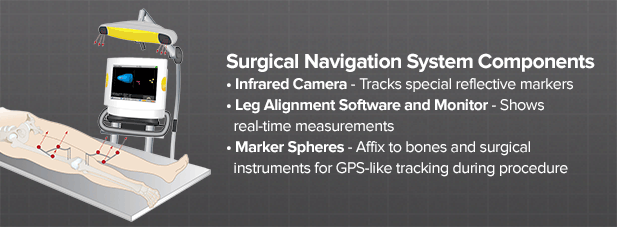
Hardware
The software-guided system for knee replacement measures the position of your bones and your surgeons’ instruments in relation to each other. For this purpose, it is equipped with an infrared camera that tracks special reflective markers affixed to the bones and the surgical instruments.
By registering your anatomy in relation to these markers, the software-guided system is able to compute distances, angles and alignment as required in the surgical treatment steps of total knee replacement (TKR prepare ») and partial knee replacement (partial knee replacement prepare »).
Software
The system software creates a computerized model of your knee joint – this looks very much like a computer animation or video of your internal knee anatomy. This ‘animated model’ is displayed on a computer monitor in the operating room and tracks your anatomy, helping your surgeon measure and aim for correct joint alignment based on your specific bone anatomy and ligaments during the surgery.
Balancing of the knee joint with existing tendons and ligaments is very important for range of motion and stability. With the support of software-guided systems, surgeons can analyze and predict soft tissue balance during the surgery.
By ‘tracking’ surgical instruments and artificial components as they relate to your anatomy, software-guided tools for knee replacement support your surgeon in restoring stability and function to your knee joint. Studies have shown that better mechanical alignment through computer-assisted surgery leads to better functional outcome and patient quality-of-life outcome.3